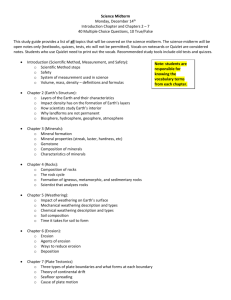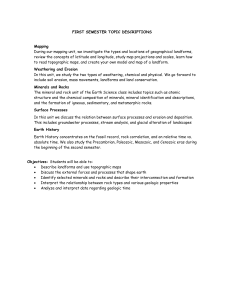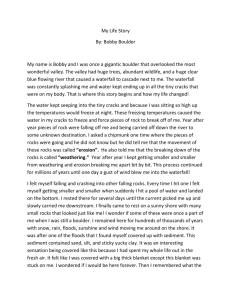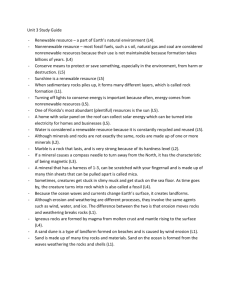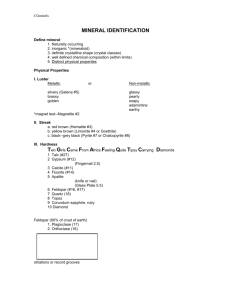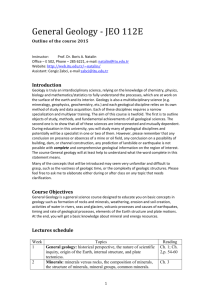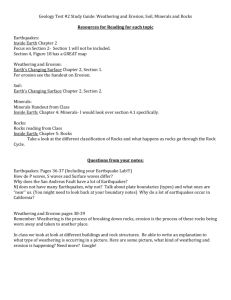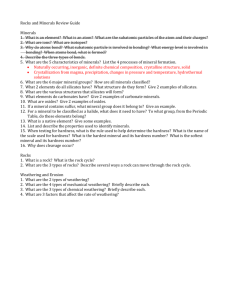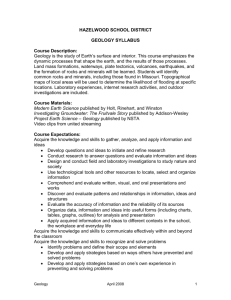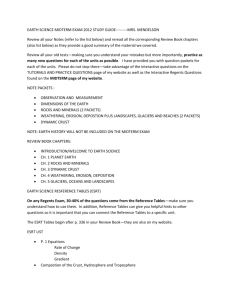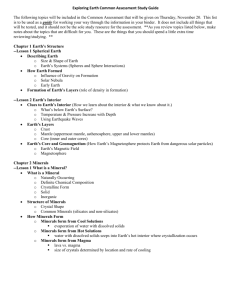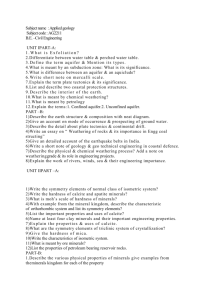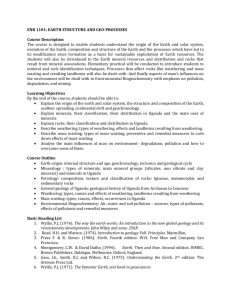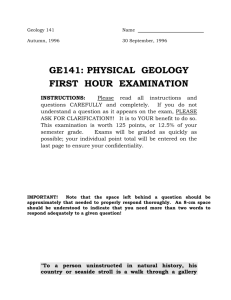Geology Test Study Guide Name Class Rock Cycle Draw and label
advertisement
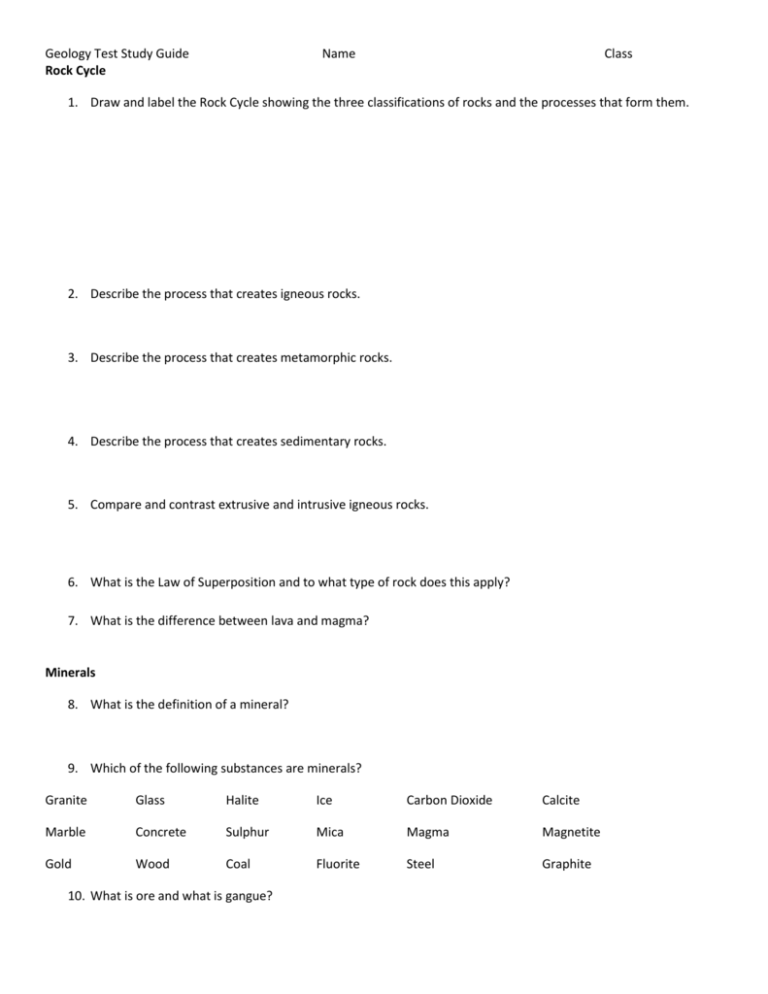
Geology Test Study Guide Rock Cycle Name Class 1. Draw and label the Rock Cycle showing the three classifications of rocks and the processes that form them. 2. Describe the process that creates igneous rocks. 3. Describe the process that creates metamorphic rocks. 4. Describe the process that creates sedimentary rocks. 5. Compare and contrast extrusive and intrusive igneous rocks. 6. What is the Law of Superposition and to what type of rock does this apply? 7. What is the difference between lava and magma? Minerals 8. What is the definition of a mineral? 9. Which of the following substances are minerals? Granite Glass Halite Ice Carbon Dioxide Calcite Marble Concrete Sulphur Mica Magma Magnetite Gold Wood Coal Fluorite Steel Graphite 10. What is ore and what is gangue? Geology Test Study Guide Name Class 11. List and describe the properties used to identify minerals. Use the table below to answer questions 12 and 13. Mineral Calcite Fluorite Halite Hardness 3 4 2.5 Streak White White White Color Colorless Green Colorless Cleavage Yes Yes Yes Other Properties Double Refraction Fluorescence Salty 12. Callie has an unknown mineral. She knows that it is very easily scratched by a nail which means the mineral has a hardness of 2.5 to 3. Using the table above, what characteristic should she test for next? 13. Looking at the table above, which properties would not be useful in differentiating between calcite, halite and fluorite? 14. What is the purpose of the Mohs Scale? Natural Resources 15. What is a fossil fuel? Name the three major types. 16. List energy resources, identify whether or not it is renewable, and list an advantage and disadvantage for each. Energy Resource Renewable? Advantage Disadvantage 17. What is a natural resource? List three renewable and three non-renewable. Geology Test Study Guide Name 18. Why might mankind run out of some of our natural resources in the future? 19. List three ways that natural resources can be conserved. 20. What is the origin for all sources of energy and natural resources? Weathering and Erosion 21. What is the difference between weathering and erosion? 22. What is physical (mechanical) weathering? Give three examples. 23. What is chemical weathering? Give three examples. 24. Why do the Rocky Mountains look so different from the Appalachian Mountains? 25. Which type of valley is formed from a glacier? A river? 26. What contributes to soil erosion? Class Geology Test Study Guide Name 27. What measures can humans employ to prevent soil erosion? Class

